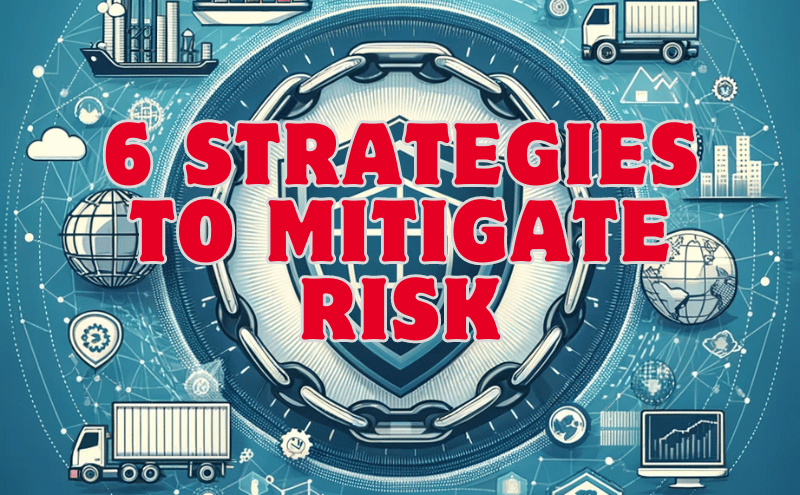Supply Chain Risk Management | Top 6 Strategies to Effectively Manage Risks
In today’s interconnected world, supply chain risk management is complex and exposed to a variety of elements. From natural disasters disrupting production to cyber-attacks impacting data security, the challenges are multifaceted. Effective risk management is essential for maintaining the resilience and reliability of supply chains. Here are six key strategies to manage supply chain risks effectively.
1. Diversify the Supplier Base
Relying on a single supplier or a concentrated group of suppliers in one geographic location can be risky. Diversification is crucial to mitigating this risk. By sourcing materials from a wider range of suppliers, spread across different regions, companies can reduce their vulnerability to regional disruptions, political instability, or supplier-specific issues.
2. Invest in Technology for Better Visibility
Advanced technologies such as AI, IoT, and blockchain can significantly enhance supply chain visibility. These tools provide real-time data and analytics, helping businesses monitor supply chain activities and quickly identify potential risks. Improved visibility enables more proactive management of issues before they escalate into significant problems.
3. Develop Strong Relationships with Key Suppliers
Building strong, collaborative relationships with suppliers can lead to more transparent and resilient supply chains. Regular communication and joint risk assessments can help identify potential vulnerabilities and encourage suppliers to adhere to compliance standards. Collaborative relationships can also lead to more flexible and responsive supply chain arrangements.
4. Implement Robust Cybersecurity Measures
Cybersecurity is a growing concern for supply chains, especially with the increasing use of digital platforms and IoT devices. Protecting data and systems against cyber-attacks is critical. This includes regular security audits, employee training on cybersecurity best practices, and implementing secure, encrypted systems for data transmission and storage.
5. Focus on Flexible and Agile Operations
Agility and flexibility are key in responding to supply chain disruptions. This can involve having contingency plans for critical supply chain functions, investing in flexible manufacturing systems, and maintaining buffer stock to cushion against supply fluctuations. Being able to quickly adapt and reconfigure the supply chain in response to changing conditions is a vital risk management strategy.
6. Regularly Assess and Plan for Risks
Regular risk assessments are crucial for understanding the potential risks in a supply chain. This involves identifying and analyzing the likelihood and impact of different risks, from geopolitical changes to natural disasters. Based on these assessments, companies should develop and regularly update their risk management plans, including clearly defined response strategies for different scenarios.
Conclusion
Managing supply chain risks requires a multifaceted approach. It’s about understanding the complex web of interactions and dependencies within the supply chain and being prepared for a variety of potential disruptions. By diversifying suppliers, investing in technology for better visibility, fostering strong relationships with suppliers, focusing on cybersecurity, maintaining agile operations, and regularly assessing risks, businesses can build more resilient and reliable supply chains. In an era where supply chain disruptions can have significant impacts on business operations and revenue, effective risk management is not just a necessity; it’s a strategic imperative.




